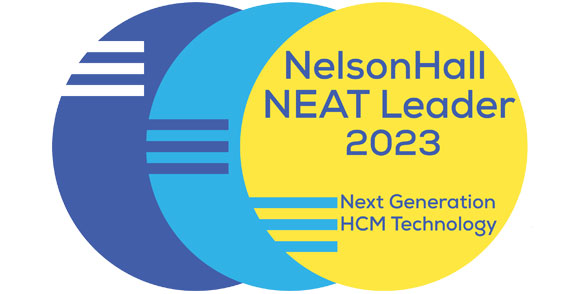Human capital management or HCM describes the strategy involved in employee management and development, with the view that employees are the human capital, meaning their knowledge, skills and expertise bring value and strength to the organisation.
The approach includes hiring the appropriate people; performance and talent management; learning and development; pay and benefits; ensuring optimum productivity; and creating employee engagement.
Ultimately, the goal is to establish an engaged, productive workforce that helps the company’s success and helps meet their strategy.
Human capital can be built in some of the following ways:
- Recruiting talented individuals to vacancies
- Tracking employee performance
- Elevating employee skills with a learning and training programme
- Building retention into the company strategy, with competitive salaries, rewards, and incentives
Specialist software is a means of supporting Human capital management within an organisation. HCM software can combine numerous HR systems to hold employee data, run reports, gain insights, and create a smoother experience for both employer and employees.
Making a checklist of requirements can be a great first step to selecting the best HCM partner for your company. Which of your organisational goals are reliant on HCM, and how would not meeting these goals impact your organisation? Answers to these questions can help you weigh up which providers and products would best fit your needs.
Human resources information systems (HRIS) and Human resources management system (HRMS) are other names for HCM, but they all describe replacing manual processes with a single solution. HCM software can bring comprehensive applications to every aspect of the employee lifecycle, along with detailed analytics and reporting to organisations up to enterprise level.
What are the features of Human capital management?
Human capital management consists of the numerous HR applications and approaches that can help to optimise employee skills and talents. These include:
- Recruiting the right people
- Onboarding new staff members
- Payroll management
- Tracking time and attendance
- Managing benefits and pensions
- Engaging employees
- Learning and training
- Running reports for analytics
- Helping companies stay compliant
What are the benefits of using Human capital management?
Human capital management can bring multiple benefits to business, from boosting their growth to staying compliant. Here are the key benefits in more detail:
- Gaining data to inform decisions
Human Capital Management software can collate and analyse employee data all from one place, enabling insightful reporting. Using this data, tools within HCM enable forecasting that can assist employers in making better decisions about scheduling, employee engagement and more. - Boosting company growth
When a business grows in terms of new acquisitions, new employees and locations, cloud-based software can adapt and expand with the company to elevate their HR processes and help them manage more staff and more data. - Attracting and retaining talent HCM software can enhance the way that companies attract and engage with employees, ultimately assisting with staff retention. The technology delivers a unified platform including tools through which employees can easily access details of their pay, pensions, and benefits.
- Increasing profits Workflows that are automated and take the place of previously manual tasks could reduce the costs of labour while freeing up employees to focus their time on areas of company growth.
- Making data more secure HCM software is cloud based and designed to be entirely secure, with multiple layers of protection and security warnings to assist with preventing fraud and data breaches.
- Staying compliant with regulationsCloud based software keeps companies connected to the latest updates, while both local and global monitoring capabilities can help companies align with frequently changing regulations.
Human capital management (HCM) challenges
If you’re like most business owners, you might be concerned about overcoming today’s obstacles and anticipating tomorrow’s needs. Here are some common challenges that human capital management can help you address:
- Talent strategy
There are many opportunities throughout the employee lifecycle to engage your people and align their performance with your business goals. - User experience
Technology that’s intuitive and easy to use can increase workforce productivity and improve morale. - Big data
From optimized schedules to competitive compensation packages, data can power better decisions. - Administrative burdens
Tools and resources that save time allow you to focus more attention on business strategy. - Systems integration
Integrated systems may save you time, resources and money. They also help maintain visibility across borders. - Compliance
Sound data and proactive approaches to changing regulations can help you maintain compliance. - Data security and privacy
Gold-standard protections and assured response measures are critical to data security.
Why human capital management (HCM) is important
Human capital management strategy is critical to your success because payroll and HR cross every functional area of your organization and affect every employee. Evolving market forces also make HCM increasingly important. These trends include:
- Changing workforce demographics and the ability to get work done in remote environments
- An expanded availability of contract-based and freelance employees
- Increasing compliance regulations in both the United States and other countries
- Tightening labor markets and the need for specialized skills
- The prevalence of team-based work structures
- An explosion of available workforce data
How human capital management technology can help your organization
HCM technology presents an opportunity to deliver strategic workforce optimization for your business. It can help you:
- Make data-driven decisions: Predictive analytics and forecasting may lead to better decisions about compensation packages, work schedules and more.
- Encourage business growth: Cloud-based solutions that are adaptable and expandable allow for the management of more employees, transactions and data.
- Increase profitability: Automated workflows that replace manual tasks may reduce direct labor costs and administrative expenses.
- Optimise talent strategies: Chatbot-assisted applicant screenings, multimedia-based training and mobile self-service options are just a few of the ways technology can improve how you attract and retain talent.
- Secure data: Multi-layered protection and public-facing security alerts can help prevent data breaches and fraud.
- Improve regulatory compliance: Global and local monitoring capabilities may allow you to stay current with changing regulations.
What is human capital management software?
HCM software is an aggregate of multiple HR systems that use mobile and cloud-based technology to process data, run reports and create a smooth end-user experience. There are generally two types of service models – best of breed and unified.
With a best of breed approach, you purchase the applications you need from different vendors. This gives you greater depth of functionality, but also more complexity because you’ll have multiple vendors, contracts and user experiences. A unified solution, on the other hand, means working with just one vendor for all your HCM needs. Although this model may be simpler to maintain, the features are often not as robust as best of breed systems.
How to choose a human capital management system
Choosing the right HCM partner for your organization is sometimes a daunting task, but it can be achieved with a focused, organized and strategic buying process.
Build a requirements checklist that outlines the business goals dependent on HCM and how not achieving them will impact your organization. This can help you evaluate HCM solutions that best fit your needs.
- Create a plan of action that includes project scope, necessary resources, budget and team leaders.
- Identify the internal stakeholders who will be most affected by the project and keep them informed at all times.
- Familiarize yourself with your organization’s approval process for transformative projects and outsourced solutions.
- Secure stakeholder approval by presenting the solution and highlighting the business, financial and end user benefits. An HCM business case template can help you make your point effectively.
Case study: Helping Starbucks with Human capital management
Starbucks needs no introduction for most people. The Seattle-founded, global chain of coffee shops is the world’s biggest, with almost 34,000 stores in 80 countries.
In the Netherlands, operations are run by a long-term strategic partner called Alsea S.A.B. de C.V. This independent operator of large chain restaurants is prolific across Europe in addition to Latin America. Merel Lommers is the HR Business Manager of Starbucks in the Netherlands.
The Challenges:
- The company had outgrown its dated payroll system, which still involved numerous manual processes.
- Errors were common, and so was frustration when trying to resolve the issues via email exchanges involving multiple people.
- Starbucks wanted to improve their reporting function, so that managers could analyse workflows more effectively, and use forecasting to inform their future business decisions.
The Outcomes:
- Starbucks opted for ADP iHCM, which delivers HCM management in a single cloud-based, compliant platform – taking away the need for expensive integrations.
- The company also chose to employ ADP DataCloud, an application that delivers analytics via machine learning, to offer business insights that Starbucks can act upon to elevate their processes.
- ADP gave Merel thorough training to make sure Starbucks could benefit from the full capabilities of iHCM, which she then passed onto her store managers.
“I have really enjoyed working with ADP. Other providers can be very black and white about what is possible and what isn’t. However, the team at ADP have always strived to quickly find a solution. Sometimes in highly creative ways.”
- Merel Lommers, Starbucks Netherlands HR Business Partner.




